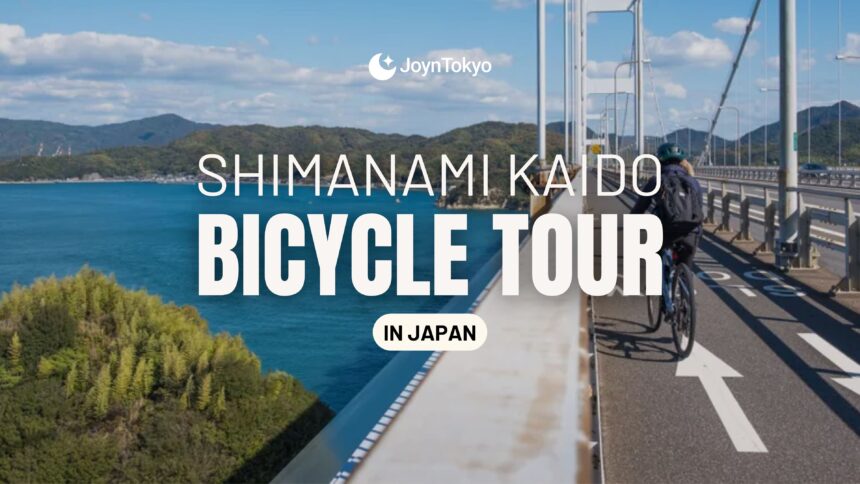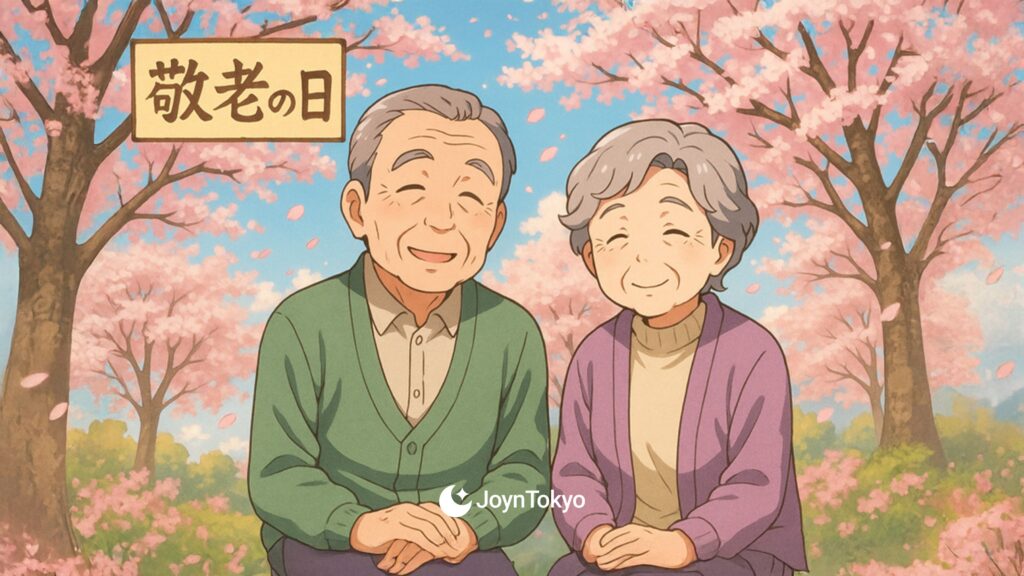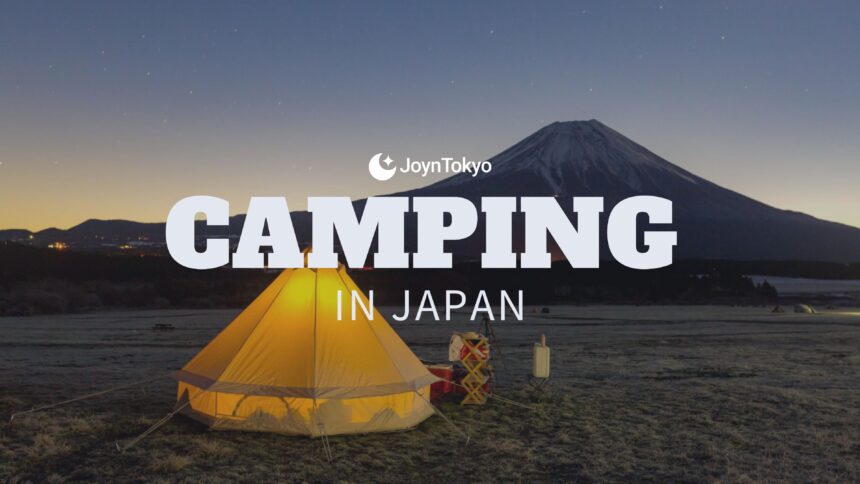From its beautiful architecture to its vibrant and lively culture, Japan has many unique delights for visitors to experience. Yet its ability to seamlessly blend technology with daily life means one of its most accessible wonders is often overlooked: its engineering prowess. While we marvel at the efficiency of Shinkansen (Bullet Trains), we rarely consider the civil engineering feats that underpin everyday life. In this article, we want to highlight one such achievement, an unforgettable one that you can explore by yourself: The Shimanami Kaido.
A feat by itself, the Shimanami Kaido is a road that connects the city of Onomichi (Hiroshima Prefecture) with the city of Imabari (Ehime Prefecture). Composed of seven beautiful bridges, the road crosses the Seto Inland Sea, being the only land connection between the main islands of Honshu and Shikoku. But what’s more, the road is fully traversable by bike, allowing this engineering wonder to become an adventure in its own right for travellers. This cycling experience across two prefectures and six different islands dares explorers to try it. Will you?
Am I Ready to Bike the Shimanami Kaido?
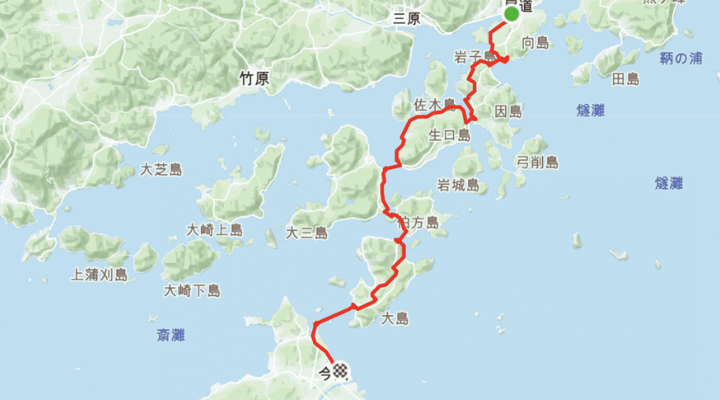
The Shimanami Kaido is a 60-kilometer-long road, but its bike lane diverges slightly from the main path, adding an extra ten kilometers (making it 70 kilometers in total). That distance may seem overwhelming for beginners, but the road itself is relatively flat and has plenty of stops and amenities along the way. This means that anyone can traverse the Shimanami Kaido at their own pace.
If you are an experienced cyclist, the Shimanami Kaido can be completed in just one day, if you can ride for around 10 hours and make very few stops. The most popular itinerary, however, is within two days, 35 kilometers each, leaving ample time for detours and exploration. It’s all a matter of planning around your time and the days you have available.
When’s the Best Season to Go?
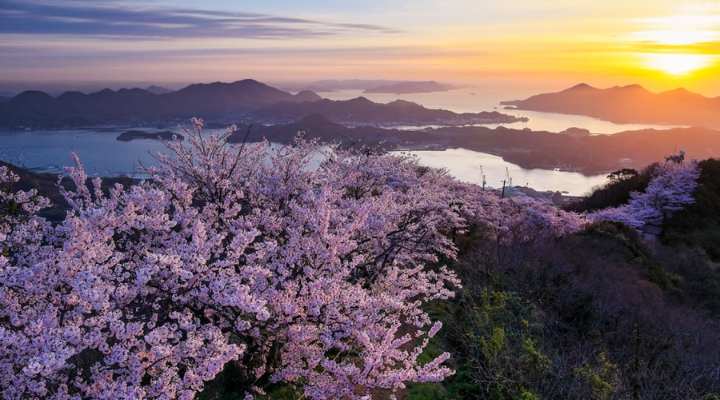
Let’s say you’re up for the challenge and are planning on riding the Shimanami Kaido. Great! Now you need to find the best season to go. After all, since it is an outdoor activity, this choice will significantly impact your enjoyment.
While the Shimanami Kaido is traversable all year round, the consensus from cycling enthusiasts is that spring and autumn are the best options. Spring stands out for its low humidity, cherry blossom scenery and clear skies, while autumn brings cool air and the gorgeous sight of the reddish-brown island leaves.
Summer and winter are also doable, but in them you have a few things to consider. For summer, the high heat and humidity need to be kept in mind, as well as the beginning of the rainy season in June. During this time, keeping hydrated is vital. In winter, low temperatures (while not extreme) need to be considered, as they might be overwhelming for some people. This being said, neither season is particularly challenging, just slightly inconvenient.
Cycling Shimanami
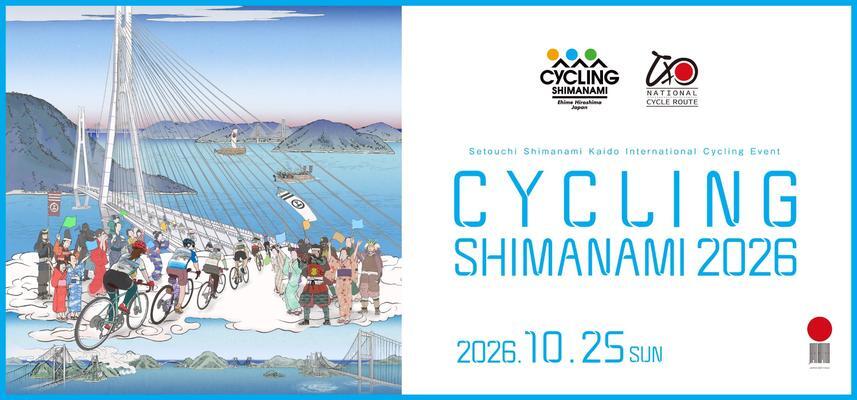
Additionally, if you’re planning on going around late October, you might be in time for the Cycling Shimanami. This is a non-competitive ride in which the Shimanami Road is reserved to bikes only, attracting thousands of people from around the world. It takes place every two years, giving participants plenty of time to plan around it. The next one will be on October 25, 2026.
Even if you don’t intend to participate, keep the date in mind, as the Shimanami Kaido is very crowded during this event. However, if you want to compete, registration usually opens five months in advance. For more information, we suggest you check the Cycling Shimanami website.
Where to Start?
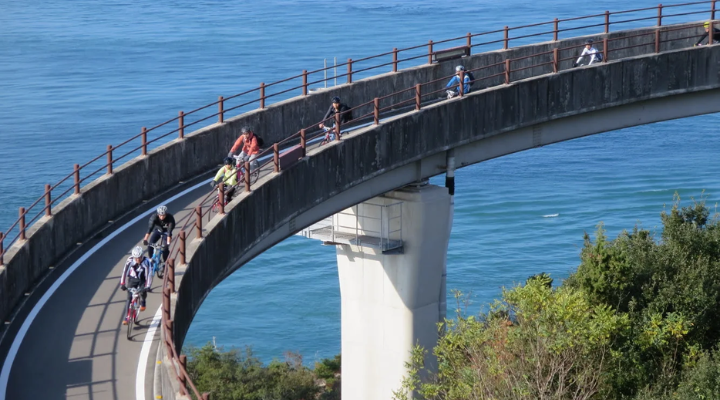
The Shimanami Kaido has two endpoints depending on where you begin: Onomichi or Imabari. Both options have their pros and cons, and determining which one suits you best is another important step in planning your trip.
Onomichi is by far the most popular starting point for logistical reasons. It, for one, is located on Japan’s main island in the prefecture of Hiroshima, which means it’s well-connected via Shinkansen to other major cities (Tokyo, Osaka, Kyoto, etc.). This route, however, does involve paying for a short five-minute ferry ride, as the cycling road doesn’t officially start in Onomichi, but in Mukaishima Island.
Imabari, on the other hand, might be a better option for novice bikers. The winds generally flow from the southeast, meaning Imabari-starting riders can catch the tailwinds and have a slight advantage. Additionally, the Imabari route begins with the Kurushima Kaikyo Bridge, one of the most elevated parts of the road. For some, it’s an ideal finale, while for others it’s better to get it out of the way as soon as possible.
Bike Rentals and Luggage Considerations
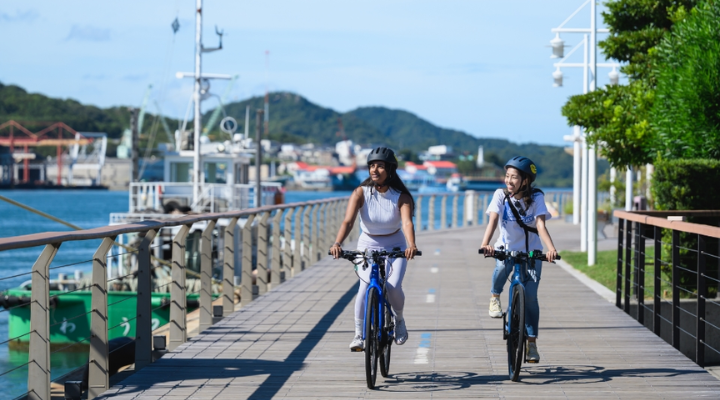
Practically speaking, most people won’t go to Japan exclusively to do the Shimanami Kaido. If you happen to live here, it makes things a lot easier. Take your bike, ride across islands and come back home. Done! If you are a traveller, however, it’s best to be informed about the bike rentals and luggage services offered.
For bike rentals, you can find terminals in both Onomichi and Imabari from public and private providers. Public bikes are generally less expensive (¥3,000 for adults, ¥1,000 for children, per day) but may be difficult to find during peak seasons (Autumn and Spring), so it is best to reserve in advance. Private bikes can be rented any day and are usually higher quality road bikes, which is why they are more expensive (around ¥4,000 per day). In either case, we recommend you check the official Shimanami bike rental website for more detailed information.
As for the luggage service, you have the option of coin lockers or luggage forwarding. The first one, coin lockers, are self-explanatory, found in major train stations (like Onomichi and Imabari) and are great if you need short term storage. The second one, luggage forwarding, are services that deliver your luggage directly to the destination you choose. Most of these are affiliated with accommodations across the Shimanami Kaido, which is why their delivery times are incredibly efficient. We recommend you check either Yamato Transport or Sagawa Transport, both reliable options for this kind of service.
Best Stops in the Shimanami Kaido
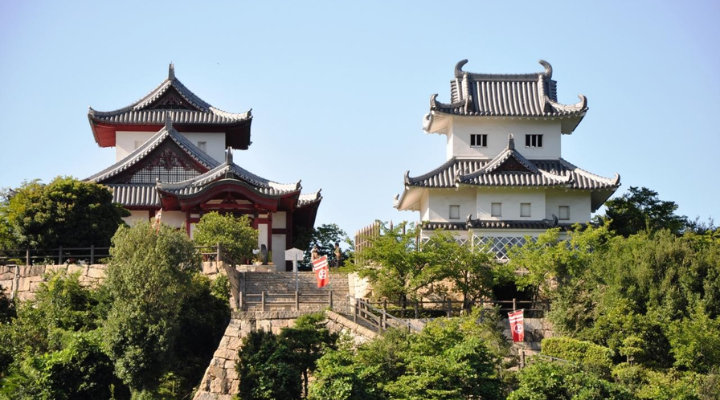
Once all the logistics are settled, all that’s left is to grab your bike and enjoy the ride. Luckily, the Shimanami Kaido has some fantastic places for you to explore. As mentioned earlier, the journey passes through six different islands, which are: Mukaishima, Innoshima, Ikuchijima, Omishima, Hakatajima and Oshima. All of these have fantastic sightseeing spots, local delicacies, beautiful beaches and some awe-inspiring spots for you to discover.
Some of the best stops along the way include:
The Suigun Castle: Located on the island of Innoshima, this castle was built in 1983 to house the weapons and artifacts that once belonged to the Murakami Suigun Clan. This clan of pirates was active from the 14th to the 16th, and their collection is nothing short of staggering.
Kirosan Observatory park: Found high up on the island of Oshima, this park has some of the best views of the Seto Inland Sea. Located around the midpoint, it is a perfect place to see both what awaits you and how far you’ve come.
The Kōsan-ji Temple: Built over the course of 30 years from 1905 to 1935, this temple was made to secure its creator’s mother place in Buddhist paradise. The man in question, Kanemoto Kozo, was a businessman who, after becoming a priest, used his fortune to make the temple and fill it with replicas of some of Japan’s most famous shrines.
It’s also worth noting that both Imabari and Onomichi (as either your first or last destination) are also wonderful cities to explore. Imabari, for example, is home to the Castle of Imabari, as well as the six sacred shrines that are part of the Shikoku 88 temple pilgrimage. Similarly, Onomichi is home to the Senko-ji Temple and the Tenne-ji temple, two beautiful structures that are said to contain precious items beyond earthly description.
Accommodations
Finally, the last thing to keep in mind are the accommodations you’ll be staying in throughout your journey. This is good to know even if you’re an experienced biker who is able to complete the Shimanami Kaido in one day. After all, every road has a beginning and an end. And there should always be a proper resting point at either.
Considering the end point might be the starting point for some, and vice versa, the best way to address this subject is by noting the accommodations in Onomichi, Imabari and some midpoint locations. Here are some of our favourites.
Onomichi
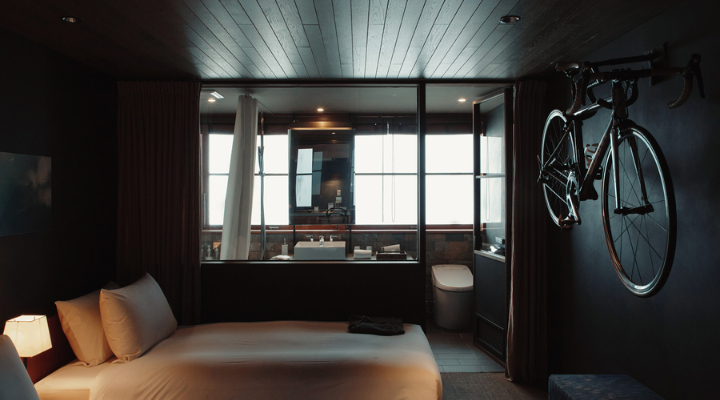
Despite there being multiple hotels that cater to cyclists in Onomichi, there’s one indisputable best: Hotel Cycle (U2). This is a hotel made by cyclists, for cyclists. It’s set in a renovated warehouse complex, maintaining a balance between an elegant high class hotel and its inherent sporty nature. Here, you can check in with your bike and even get it up to your room. Additionally, it offers free bike rentals for guests, so anyone can partake in its lively culture.
Other possible hotels are the Greenhill Hotel and the Lemonsea. The first one is located next to the train station, making it easy to plan around; the second one is close to bike rentals and promises an unforgettable breakfast experience if you were to stay.
Midpoint
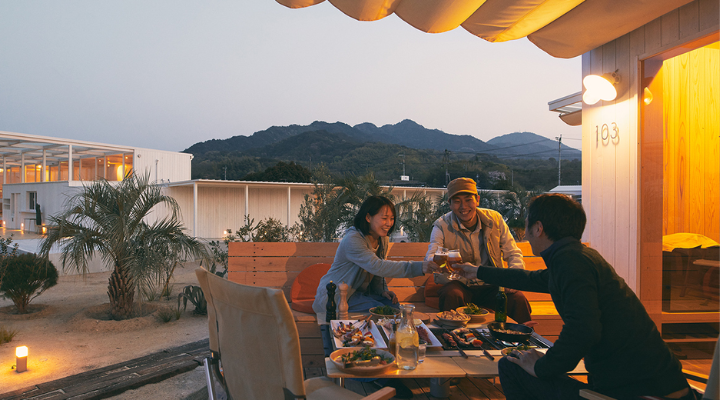
Accommodations in either the island of Ikuchijima or Omishima are fantastic, as they offer a well deserved break after a long day of cycling.
In Ikuchijima, we suggest you visit SOIL Setoda, a guesthouse with renovated high-end baths, perfect for post-ride relaxation. In Omishima, there are two fantastic options in Wakka and Ryokan Sawaki. The first, Wakka, offers modern cabins that range from rustic to luxurious, all accompanied by remarkable Seto Inland Sea views. Conversely, Ryokan Sawaki is for those who prefer traditional Japanese experiences, being a classic ryokan through and through, complete with excellent service, tatami rooms and amazing seafood.
Imabari
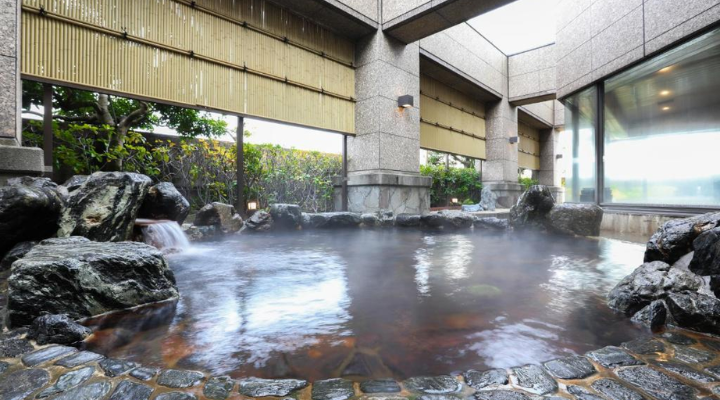
Finally, accommodations in Imabari are similar to that of Onomichi, in the sense there are hotels specifically tailored towards cyclists. If you were to begin the Shimanami Kaido from here, the Shimanami Guesthouse Cyclonoie is a great choice. It offers bike rentals, is located at the beginning of the Shimanami Kaido, and is run by expert cyclists.
If you’re looking for a different accommodation after all your pedalling, we recommend the Imabari Kokusai Hotel. This is an urban, huge, modern hotel filled with some of the most sought after amenities. Among them we find an indoor pool, a beautiful Japanese garden, and even its own shopping mall. Crucially for cyclists, the hotel allows guests to bring their bicycles into the spacious rooms for maximum security.
Join the Joyride!
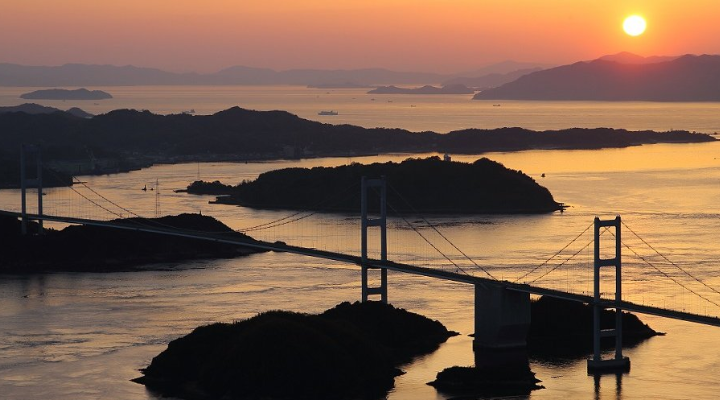
Whether summer or winter, spring or autumn, the Seto Inland Sea is waiting for you to traverse it. The Shimanami Kaido not only offers that experience, but promises a thrilling bike journey with it. It’s only you and your trusty bike, with sea wind flowing through your helmet, exploring lands eager for your arrival, making sure you remember them well past the finish line.
The Shimanami Kaido is an accessible and unforgettable experience just waiting for you to take to the road. It’s more than an adventure, it is a chance to challenge yourself to the backdrop of gorgeous scenery and a lively island culture. So, whether you live in Japan, or you’re just visiting, a visit here is worth the trip to see real Japan while getting your exercise in!

